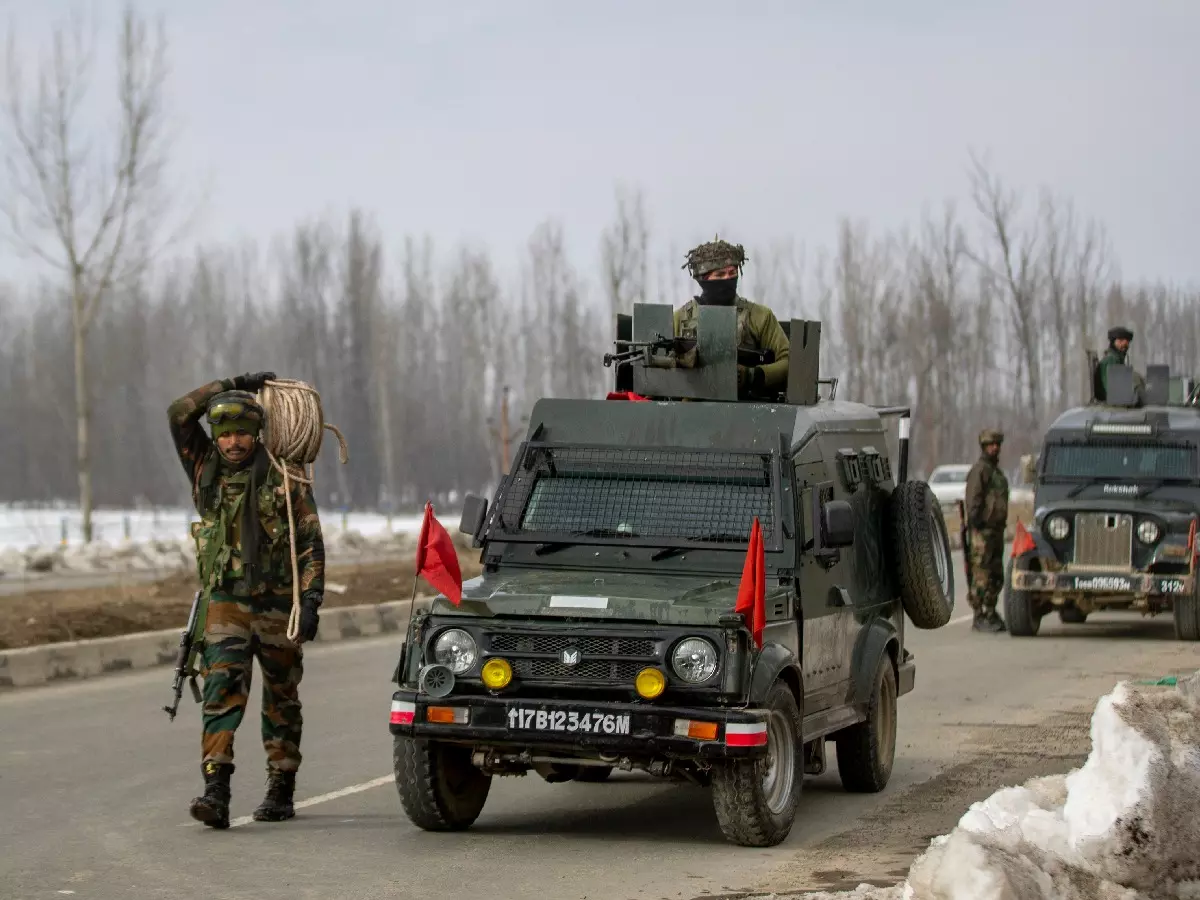Explained: What Is Hybrid Warfare And How Russia Is Reportedly Using This Tactic In Ukraine
Even as explosions rattled the purported breakaway city of Donetsk in Ukraine's eastern region, the Russian military entered the country, claiming that separatists in Ukraine had begged Russia for assistance in repelling Ukrainian "aggression" against them and their people.

Even as explosions rattled the purported breakaway city of Donetsk in Ukraine's eastern region, the Russian military entered the country, claiming that separatists in Ukraine had begged Russia for assistance in repelling Ukrainian "aggression" against them and their people.
Over the last two weeks, Russian military columns have been steadily deployed along the Russia-Ukraine border. When Russian President Vladimir Putin declared the two separatist regions of Ukraine independent and authorised the deployment of "peacekeeping forces," the situation became even more tense.
 AP
AP
According to reports, Russia is utilising hybrid warfare by sending not only its military and air forces, but also sophisticated cyber warfare against Ukraine's crucial infrastructure.
While Ukrainian websites have been under constant attack on a small scale for the past few months, the last two days have been particularly difficult, with Russia launching a series of extremely powerful cyberattacks on key sites such as the Ministry of Foreign Affairs' website, the websites of key cabinet ministers, the Ukrainian Parliament's website, and other government departments and private banks.
Hoffman and hybrid warfare
Subterfuge and surprise have existed since the dawn of warfare. The classic "The Art of War," credited to Sun Tzu and thought to date from the 5th century BC, asserts that "to subdue the enemy without fighting is the acme of skill."
 Military Capabilities Of Russia and Ukraine | Reuters
Military Capabilities Of Russia and Ukraine | Reuters
Frank Hoffman, a former US Marine and defence expert, popularised the concept of hybrid war in a 2007 article that examined chaotic warfare in Iraq, Afghanistan, and elsewhere in which tactics altered and the barrier between civilians and soldiers was blurred.
"Hybrid Wars incorporate a range of different modes of warfare, including conventional capabilities, irregular tactics and formations, terrorist acts including indiscriminate violence and coercion, and criminal disorder," Hoffman further wrote. This variety of actions could be the work of the same actor.
He was mostly thinking of insurgency organisations and weak regimes like Iran when he said this. One example of the hybrid combatant is Hizbullah, a Shia militia-turned-political organisation in Lebanon backed by Iran. Hoffman's only mention of Russia, a powerful country, was to highlight the country's experience combating hybrid insurgencies in Chechnya.
 AP
AP
Hybrid conflict, in his opinion, is fundamentally a sort of asymmetric warfare in which a fighter tries to avoid the strengths of a more powerful opponent.
Non-linear warfare
Russian strategists, for their part, speak of "non-linear warfare," a term coined by one of Mr Putin's closest advisors, Vladislav Surkov, in a dystopian short tale to describe a chaotic fight pitting "all against all."
General Valery Gerasimov, Russia's armed-forces head, is another alleged godfather of unorthodox means. In a 2013 article he wrote, "In the 21st century we have seen a tendency toward blurring the lines between the states of war and peace. Wars are no longer declared and, having begun, proceed according to an unfamiliar template."
A prosperous state, he observed, "in a matter of months and even days can turn into an arena of fierce armed struggle, become a victim of foreign intervention, plunge into the abyss of chaos, humanitarian catastrophe and civil war."
What is grey-zone aggression?
"Grey-zone aggression", as defined by Elisabeth Braw means "the use of hostile acts outside the realm of armed conflict to weaken a rival country, entity or alliance". If these are mixed in with actual combat then they become hybrid warfare.
 Reuters
Reuters
"It has become fashionable to use hybrid war for anything that is a bit mysterious," she says, "In fact, every war is now hybrid because it has both military and non-military dimensions, such as propaganda and cyber." However, the grey-zone aspect is growing more significant as a result of globalisation and interconnections, which provide a plethora of alternatives for causing havoc.
It generally comes with a decreased risk of retaliation ĄĒ in a cyber-attack, for example, the culprit can be difficult to pinpoint. In this sense, the West's publicization of Russia's military build-up, as well as intelligence on its preparations for false-flag and other operations to establish a pretext for war, is a grey-zone response designed to confuse the Kremlin.
For more on news and current affairs from around the world please visit Indiatimes News.
